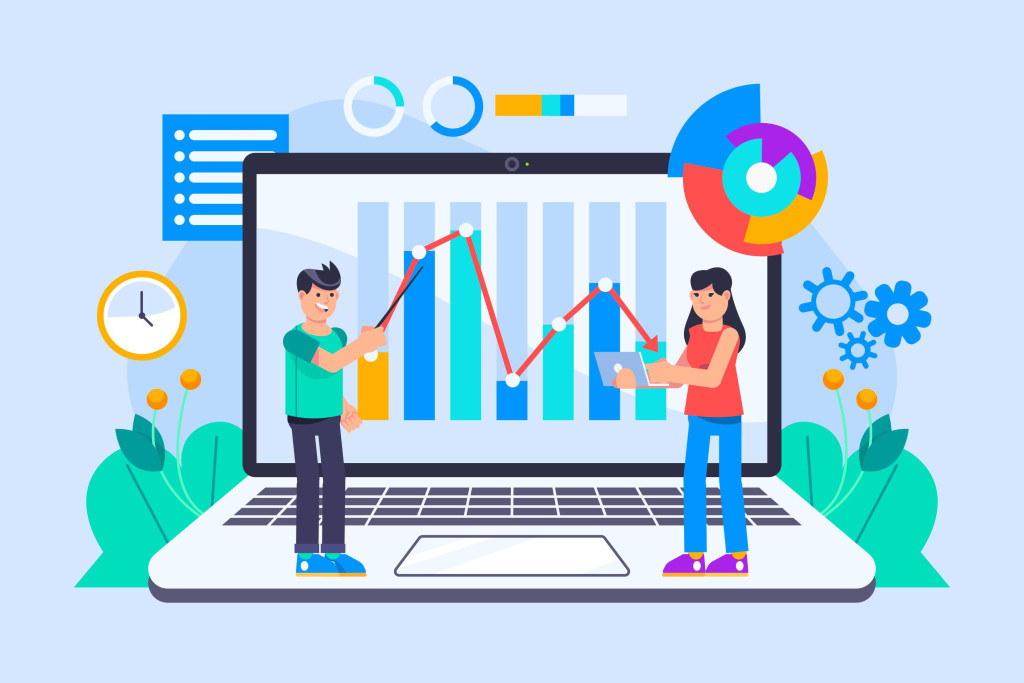
Marketing is not just about creativity anymore, it’s become a science of precision using data. Today’s winning businesses are no longer just the most creative. They are the most data-infused. Building a data-driven marketing strategy can turn your campaigns into laser-focused, extremely successful drives that deliver the most ROI possible. But where do you begin?
In this guide, we’ll give you a step-by-step run-through of how to build a data-driven marketing strategy, from setting goals to tracking performance. This process, regardless of how much you know about marketing, is going to provide you with actionable strategies to be able to transform your marketing.
Data-Driven Marketing: What Is It and Why Is It Important?
Data-driven marketing is leveraging data to make the right marketing decisions. It helps businesses concentrate on sending the right message to the right people at the right time, from the analysis of customer data.
Why is this important? Because guessing doesn’t work now. Today’s customers want personalized experiences, and data can help you deliver.
Cost-Effective Campaigns
It’s not just about reaching the right audience, but also being able to measure and refine your approach to achieve the best possible results, including better conversion, stronger customer relationships, and increased ROI.
Here’s how to construct a winning strategy of your own.
Step 1: Define Your Goals and KPIs Based on Your Business Model
All successful marketing starts with clear objectives. What is your strategy supposed to achieve? This is ground zero for everything else.

Define Specific Goals
Are you looking to improve brand awareness? Drive website traffic? Boost sales? Specificity matters. For example, instead of “increase sales,” say, “Increase sales by 20% in 6 months.”
Choose Relevant KPIs
Once aims are defined, match them with specific Key Performance Indicators (KPIs). For example:
-
Increased website traffic? Track click-throughs and unique site visitors a month.
-
Brand awareness? Monitor track impressions and social activity.
-
Retention? If you want to get more numbers, use CLV or churn.
Your goals and KPIs will be the compass to everything you decide.
Step 2: Find Your Data Sources
The effectiveness of your data-driven marketing hinges on where your information comes from. Information sources need to be timely, accurate, and diverse to add actionable value.
First-Party Data
First-party data is data you collect directly from your customers on your website, CRM, email subscriptions, loyalty programs, and even surveys. It’s the best, most accurate source of data we have.
Second-Party Data
That means obtaining data from partners. For example, if you are partnering with another brand, you might exchange insights that benefit both businesses.
Third-Party Data
Third-party data is bought from platforms such as Google Ads or Facebook Audience Insights, or from large analytics companies. This can give you insights into a more general audience you might not otherwise reach.
Gather all of that up, and suddenly you have a complete view of your customer base that you can use to target better.
Step 3: Get All Datafication Your Ducks in a Row
Once you’ve figured out where the data will come from, the next step is harvesting and organizing it.
Use Proper Tools
Use platforms and tools such as HubSpot, Tableau, or Salesforce, among many others, to gather data smoothly.
Centralize Your Data
A single solution — like the Customer Data Platform (CDP) — keeps data collected from a variety of touch-points filed under one roof. This eliminates customer data silos and allows for cross-channel insights.
Ensure Clean Data
Your data is only as good as the quality of it. Clean your dataset. Occasionally, clear up your data by:
-
Dropping duplicates
-
Filling in data for missing values
-
Checking the correctness of the data
Good and organized data is the base for smoother analysis and results.
Step 4: Analyze Your Data
The point at which raw numbers become actionable strategies is analysis. At this point, you are looking for trends, patterns, and insights that will be useful.

Customer Segmentation
Segment your audience based on any point of similarity, be it demographics, behavior, purchase history, or anything else. It does so that you can effectively address a particular group of customers.
Understand Customer Journeys
Map out the steps your customers go through from being unaware to making a purchase. Where are they falling short, and why? These findings will help conversions.
Predict Behavior
Leverage predictive analytics to predict trends or customer actions, such as who is likely to buy, churn, and so on. AI tools such as SAS or IBM Watson simplify this.
Data analysis allows you to make strategic, informed decisions as opposed to guesses.
Step 5: Deploy Your Data-Driven Strategies
And now we arrive at the strategy part.
You’ve prepared all the groundwork, and now it’s time to act. Leverage the learnings from those resources to optimize your campaigns and ensure they are data-driven.

Personalize Messaging
Powerful campaign editors allow you to send relevant ads and emails based on customer segments. With personalization, relevance is amplified, resulting in more engagement. For example, display items they’ve previously viewed on the site. If a customer likes something in your email, then you can set them a similar product in future email sends.
Optimize Campaigns by Channel
Copy on different platforms works better on some platforms than others. Leverage platform insights to craft messages on social media, direct mail, or the web.
Automate Processes
Platforms such as Market or Active Campaign that leverage AI allow your team to save time by automating repetitive tasks, such as email campaigns and audience retargeting, ensuring that your brand is always present in the background of your consumers’ minds.
Data changes your marketing when insights become action.
Step 6: Measure, Analyze, and Optimize
When it comes to marketing, nothing is ever set in stone. The answer to staying ahead is continual improvement, and that’s only possible with measurement and adaptation.

Monitor Your KPIs
Continue to measure performance against those KPIs you set. This has you moving in the direction of your goals and shows you what you need to work on.
Perform A/B Testing
Test the various possible components for campaigns, such as subject lines, CTAs, or ad images to stand out further. This will find the best-performing combinations.
Iterate and Improve
No campaign is perfect. Analyze your reviews often and refine your tactics for more efficiency, engagement, and results.
With a loop of testing, learning, and iterating, your marketing will only get better.
Next Generation Marketing Is Driven By Data
Data has become less of a luxury in marketing and more of a requirement. Companies that don’t use data to drive decisions might get left behind. A data-driven marketing plan, when done correctly, can significantly improve results.
But some, like how to make sense of volumes of data or which tools to use, may initially appear overwhelming. That’s where a strong foundation and a step-by-step approach can do wonders.
Start down the path to a smarter, more effective way to market your business and see real results. The future of marketing is here and it’s not so “bro.” Is your business ready to take advantage?
Leave a Reply